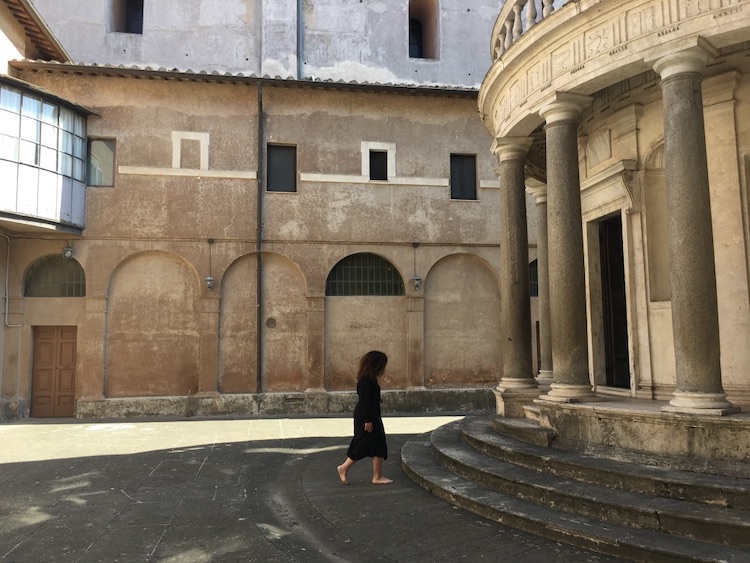As a result of the torrential rain, the ground on the hill where San Pietro in Montorio in Rome is located cracked open a few years ago. The damage done by the rain helped discover the characteristics of the subsoil on which the Academia de España en Roma stands, which is home to Tempietto di Bramante (a chapel dedicated to the martyrdom of St Peter the Apostle). Among the superimposed layers of earth, a line of yellow sandstone soil appeared. The place where this sand is located is not somewhere that is accessible to everyone, but I have been there. For a few days, I sifted through the material that I had found as if I was a gold digger. I reduced the mesh size of my sieve, to obtain the finest sand possible.


My mission was to ascertain its grades of gold. Finally, I discovered, whether it was due to the silica or just by magic, that it shone when the sun touched it with its rays. This sculpture is the physical proof of the name of this mountain: The Golden Mountain. The installation is a peaceful offering of the sand that the rain discovered. Now it has settled in the shape of a dune, under the celestial dome, and on a relief of Noah’s Arc; inside this emblematic building that was built by Bramante between 1502- 1510 in one of the courtyards of the Franciscan monastery, a homonym of Rome. Curiously historians think that in Roman times a private temple dedicated to Zeus Hadad, to the Egyptian Greek syncretistic worship, stood right here. Hadad was the god of thunder and rain that either made plants grow or destroyed them.



